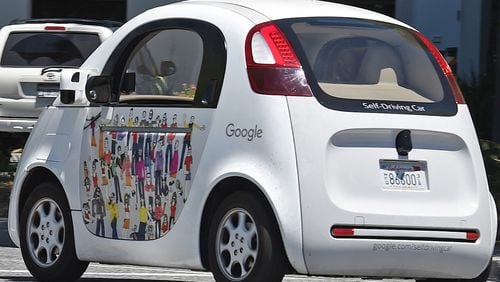DETROIT — Some consumers say they are wary of a driverless car future, but a new survey says the beginnings of the technology that will power that future are already available on most new vehicle models and many consumers are willing to pay thousands of dollars for them.
That self-driving technology has come in the form of active safety features, such as adaptive cruise control, blind-spot detection and automatic parking, which can help a vehicle avoid a collision. The survey found that such features, which were available on less than a quarter of new vehicles in 2012, are now available on more than 60 percent of new models.
“While most may be skeptical when asked if they want a car that drives itself, many consumers might not know that if they’ve bought a car recently, they could already be experiencing the early stages of automotive autonomy,” according to the survey.
The national survey, which was conducted Sept. 19-24, took responses from 1,500 U.S. residents ages 18-74 who bought or leased a vehicle in the last three years. The survey follows the J.D. Power 2017 U.S. Tech Choice Study released in April, which showed an increased wariness of fully self-driving technology even as consumers continue to want driver-assistance technology.
The Edmunds survey found that 61 percent of those who responded would pay extra for blind-spot detection — the most in-demand active safety feature — while 24 percent said they would not pay extra for any of the features.
The survey said 42 percent would be willing to pay $1,000-$2,000 for such features and 16 percent would be willing to pay $3,000 or more.
“While there are a number of ways one can define who’s ‘leading’ in the race to autonomy, analyzing the prevalence of active safety features demonstrates just how ready (automakers) are to bring this technology to mass production, and how willing consumers are to adopt it,” Jessica Caldwell, executive director of industry analysis at Edmunds, said in a news release. “While some car buyers may view a fully autonomous vehicle as a novelty, a vehicle that has the ability to prevent an accident before it occurs is seen as a safety breakthrough.”
Among automakers’ 2017 models, Tesla leads the pack for offering active safety features with 57, followed by Volvo with 47 and Honda at 37. At the bottom, Mitsubishi (3) offers the fewest, behind Fiat Chrysler (7). Nissan and General Motors were tied with 13 and Ford offers 14.
The survey noted, however, that Tesla’s place might be precarious.
“While Tesla holds the top spot among 2017 models, the speed with which autonomous development is moving could produce a much different ranking in subsequent model years,” the survey said.






